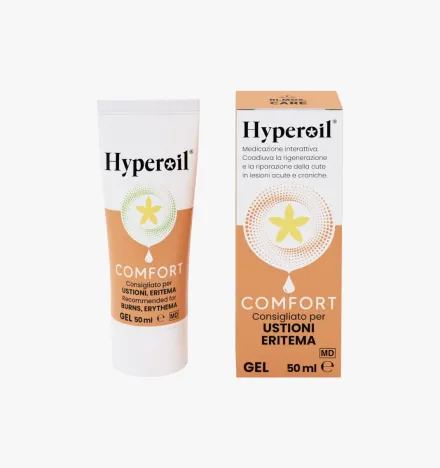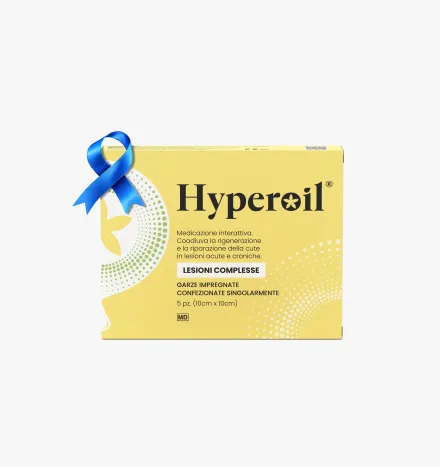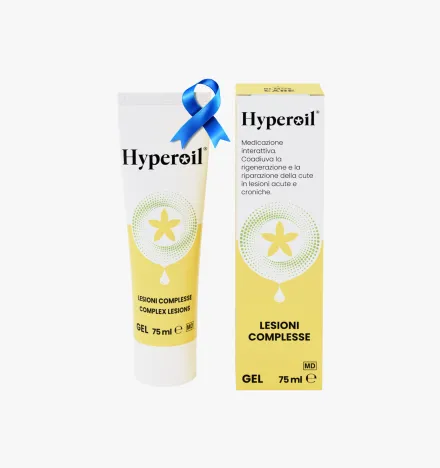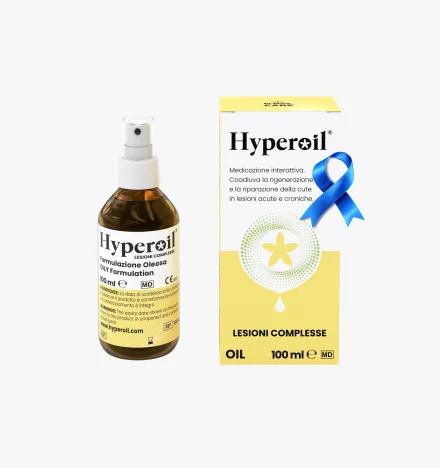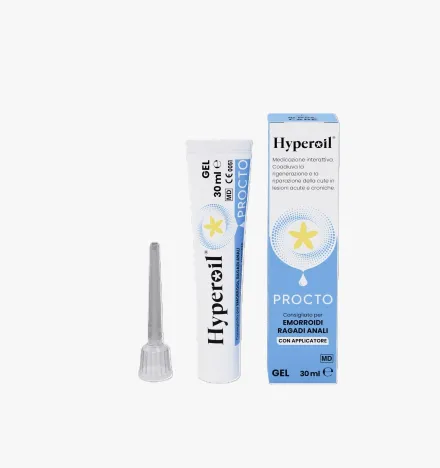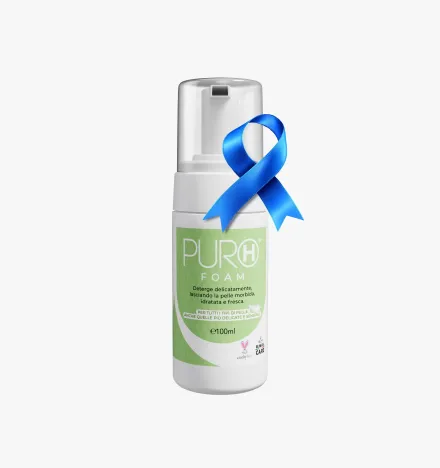Burns and Scalds
Burns and scalds are skin injuries that can range from mild to severe and have a major impact on people's quality of life. Understanding their symptoms and treatment options is critical to intervene early, minimize damage, and promote effective recovery.
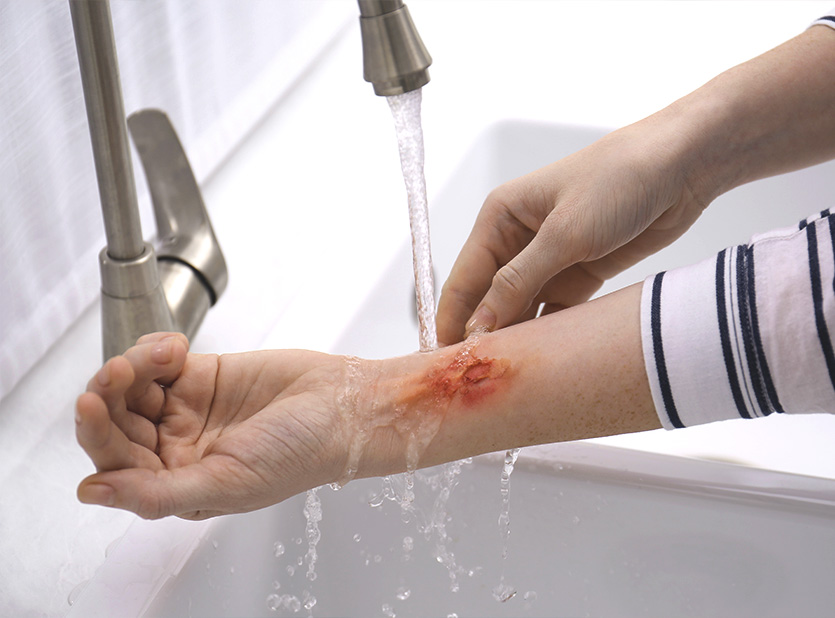
BURNS AND SCALDS: UNDERSTANDING THEM, TREATING THEM, PREVENTING THEM
Burns and scalds are common occurrences that can affect people of all ages, in varying degrees and from different causes. Depending on their severity, these injuries can cause pain, motor difficulties and, in the most serious cases, complications that require specialized interventions. Recognizing the early signs and intervening quickly with the right treatments can reduce the risk of infection and limit the progression of the injury.
WHAT ARE BURNS AND SCALDS?
Burns and scalds are injuries that occur when skin tissue is damaged by heat sources, chemicals, electricity, radiation, or sun exposure.
The term burn is used when the injury is caused by a dry heat source, such as fire or an iron, while the term scald refers to injuries caused by moist heat, such as boiling water or steam.
Burns can vary greatly in severity, from superficial, localized damage to deep injuries involving not only the skin but also subcutaneous tissues, muscles, and, in some cases, bone. Typical symptoms include redness, swelling, blistering, skin peeling, and, in severe cases, charred or white areas due to tissue destruction.
Contrary to what one might think, the intensity of pain is not always proportional to the severity of the injury: deep and very severe burns may be painless because of damage to nerve endings.
Types of burns and scalds
Burns are classified according to the depth of tissue damage and the severity of the injury. This subdivision is critical for understanding the level of severity and determining the most appropriate treatment. Each type of burn has specific characteristics, both in terms of symptoms and short- and long-term consequences.
- First-degree burns: involve only the epidermis, the most superficial layer of skin. They manifest with redness, mild swelling and moderate pain. They are mild injuries, such as sunburn or contact with non-boiling hot liquids, that heal in a few days without leaving scars.
- Second-degree burns: damage the epidermis and dermis. They are characterized by intense pain, marked redness and the formation of fluid-filled blisters. They are distinguished into:
- Superficial: Heal in one to two weeks without severe scarring.
- Deep: May require medical intervention and leave scars. - Third-degree burns: involve all layers of the skin and may extend to subcutaneous tissues, muscle, and bone. The skin appears charred or white, and pain may be absent due to destruction of nerve endings. They always require surgical treatment, such as removal of damaged tissue and skin grafts.
What are the causes of burns and scalds?
Burns and scalds can have multiple causes, depending on the agent responsible. These factors determine not only the type of injury, but also the depth of damage and the treatment needed.
The main types of burns according to their origin:
- Heat burns: caused by direct heat sources such as fire, boiling liquids, steam or hot objects. Intense heat alters tissue structure, causing cell necrosis, protein coagulation and, in extreme cases, charring. Extremely cold temperatures, such as prolonged contact with icy surfaces, can also cause severe injury.
- Chemical burns: result from exposure to strong acids or bases, such as industrial detergents, household cleaning products or corrosive substances. These burns can be very deep, although the affected area may be circumscribed.
- Electrical burns: are caused by the passage of electric current through the body. Although the superficial skin injury may seem limited, the heat generated can severely damage internal tissues, even to the point of involving muscles, nerves and bones.
- Radiation burns: include damage caused by excessive exposure to the sun, tanning lamps or ionizing radiation, such as that used in medical settings (radiotherapy). Depending on the intensity, these burns can range from mild redness to deep lesions.
- Friction burns: result from the rapid rubbing of skin against hard surfaces, such as roads, carpets or ropes. Although often superficial, they can combine with deeper traumatic injuries.
Other types of related injuriesIn addition to burns, there are other skin injuries that, although different in nature, may require similar care:
- abrasions,
- excoriations,
- bedsores,
- post-surgical injuries,
- diabetic or vascular ulcers,
- radiotherapy injuries.
In some situations, such as pressure injuries or chronic ulcers, the skin may suffer progressive damage that requires prolonged and complex treatments.
SYMPTOMS AND SIGNS
Burns and scalds have a wide range of signs and symptoms that vary according to the severity and extent of the injury.
The main symptoms associated with these lesions:
- Reddening of the skin (erythema).
- Swelling or swelling in the affected area.
- Pain and burning, varying in intensity.
- Formation of vesicles or bubbles filled with clear liquid.
- Peeling or flaking of the skin during healing.
- Presence of hard, dry skin with altered texture.
- Changes in skin color, which may appear white, brown or black.
- Loss of sensation or absence of pain in the most severely affected areas due to destruction of nerve endings.
- Oozing of fluid from damaged tissues.
- Difficulty moving the affected areas, especially if they involve joints.
More extensive or deep burns can cause systemic effects such as fever, signs of infection, increased heart rate and low blood pressure. Recognizing these symptoms quickly is crucial to avoid complications and ensure appropriate treatment.
Complications
Burns, especially major or extensive burns, can lead to significant complications, both locally and systemically:
- Infections: skin lesions increase the risk of bacterial infections and sepsis, a serious condition that can lead to shock and organ failure.
- Fluid loss: damage to blood vessels causes blood and fluid loss, reducing circulating volume and increasing the risk of hypovolemic shock.
- Hypothermia: skin loss impairs body temperature control, exposing the patient to risk of hypothermia.
- Respiratory damage: inhaling hot air or toxic fumes can cause breathing difficulties and lung damage.
- Scars: healing can lead to visible and prominent scars, such as keloids, which can limit skin elasticity.
- Joint limitations: deep burns can cause scar contractures that impair the mobility of muscles, tendons, and joints
These complications can arise at any stage from the time of injury to the healing process, necessitating close monitoring and targeted interventions to prevent or treat them.
Diagnosis
The diagnosis of burns is based on clinical assessment, which considers the extent, depth, and location of the injury. The physician identifies the degree of the burn (first, second, or third) by observing the signs visible and symptoms reported by the patient to choose the most appropriate treatment.
In cases of severe or extensive injuries, follow-up examinations, such as blood tests or radiological investigations, may be required to monitor the patient's general condition and detect any internal damage.
PREVENTION
Preventing burns and scalds requires care and taking safety measures in the various contexts of daily life. Following some simple precautions can significantly reduce the risk of accidents:
- Avoid leaving pots and pans unattended on the stove, keep handles facing inward, and use caution when handling hot liquids or boiling oils.
- Check that electrical appliances are in good condition, avoid damaged cables and do not overload outlets.
- Use protective gloves when using corrosive products.
- Apply sunscreens with a high protection factor and limit exposure during the hottest hours.
- Keep lighters, matches and candles away from flammable materials and use open flame devices such as barbecues or stoves carefully.
NATURAL REMEDIES
For minor burns, such as first-degree burns, some natural remedies can offer relief and promote healing:
- Cold water: immediately washing the affected area with cool running water for 10 to 15 minutes helps reduce heat and relieve pain. Avoid the use of ice, which may worsen the damage.
- Aloe vera: applying pure aloe vera gel to the injury calms inflammation, moisturizes the skin and promotes cell regeneration due to its soothing and healing properties.
- St. John's Wort oil (Hypericum oil): has soothing and healing properties. Gently applied to superficial burns, it helps reduce pain and promotes healing.
- Chamomile: cold compresses soaked in chamomile infusion can calm irritated skin and reduce swelling.
However, it is important to remember that these remedies should be used only on superficial, noninfected wounds, and never on severe or deep burns, for which medical advice should be sought.
MEDICAL TREATMENTS
Treatment of burns varies depending on the severity of the injury and its extent. Proper management is essential to promote healing, prevent infection and reduce complications. The following are the main guidelines:
- First-degree burns: these injuries, usually treatable at home, require immediate cooling with cold water and application of moisturizing or soothing creams, such as those with aloe vera or St. John's Wort. It is advisable to consult a physician if the affected area is extensive (more than seven centimeters), located on the face or on major joints such as hands, elbows or knees.
- Second-degree burns: management involves cleaning the wound, applying antibiotic creams and sterile dressings, which should be changed regularly to prevent infection. Medical attention should be sought if the burn involves large areas, the face or delicate parts of the body.
- Third-degree burns: these burns require immediate medical attention. Treatment may include debridement (removal of damaged tissue), administration of fluids to prevent shock and, in severe cases, surgery such as skin grafts.
In all cases, the physician may prescribe pain medication, antibiotics for secondary infections, or other medications to control symptoms. More severe injuries require constant monitoring to assess for systemic complications, such as infection, hypovolemia, or respiratory problems.
Timely and appropriate treatment is critical to reduce long-term damage and promote full recovery.
INTERACTIVE MEDICINE: NEXT-GENERATION PLANT-BASED TREATMENTS
In recent years, dermatological research has made significant strides in skin treatment. Alongside traditional remedies and medical treatments, new solutions based on the use of natural ingredients have been developed: this innovative approach, which we can call "interactive medication," aims not only to relieve symptoms but also to promote natural and lasting skin regeneration.
Interactive topical dressing treatments include Hyperoil® Comfort for burns and scalds, and the 5-piece Hyperoil® Medicated Gauze both superficial and more complex. Its Neem Oil and Hypericum formulation is designed to provide relief, promote tissue repair and prevent infectious complications, thanks to its high-quality ingredients that work without further irritating the skin.
For first-degree burns and scalds, Hyperoil® products from the RI.MOS. CARE are ideal:
- Hyperoil® Oil: ideal for the first few days after a burn, the oil keeps the injury moisturized and helps reduce the risk of visible scarring and keloids. Thanks to the antiseptic properties of Neem Oil and the regenerative action of Hypericum, the oil protects damaged skin and promotes its repair.
- Hyperoil® Gel Comfort 50ml: indicated in the later stages, the gel prolongs hydration of the treated area and completes the skin regeneration process. Its soothing formulation reduces inflammation and redness, improving comfort during healing.
- Hyperoil® Medicated Gauzes 5 pcs: impregnated with Hyperoil® Gel, these gauze pads are ideal for treating complex skin lesions, such as burns, abrasions or blisters. The gel formulation provides prolonged hydration, reduces scab formation and helps prevent infection, promoting skin regeneration.
In addition to preventing infection and stimulating cleansing and fibrinolytic activity, products in the Hyperoil® line are interactive dressings that do not require the use of disinfectants or other primary dressings.
GENERAL TREATMENT ADVICE
In case of burns, it is essential to intervene carefully to avoid making the situation worse.
For example, it is advisable to avoid creams, ointments, ice, disinfectants or home remedies unless specifically directed by a doctor. For chemical burns, follow specific instructions, avoiding water in the case of substances such as quicklime
TIPSHere are some practical tips to better manage minor burns and prevent complications:
- Remove jewelry and tight clothing: the burned area may swell, while tight objects may restrict blood circulation and slow healing.
- Clean the affected area: gently cleanse with mild soap and water to prevent infection. Next, apply a suitable ointment or cream according to the severity of the burn.
- Avoid inappropriate home remedies: replace do-it-yourself solutions with specific treatments recommended by a physician or pharmacist to avoid complications.
- Monitor skin condition and body temperature: an increase in temperature, changes in skin texture or color, or persistent pain and heat could indicate an infection. In such cases, seek immediate medical attention.
- Do not puncture blisters: blisters act as a natural protective barrier for the underlying skin, and puncturing them can increase the risk of infection.
Taking action calmly and following these directions can reduce the risk of complications and facilitate healing. For severe or extensive burns, it is critical to seek medical attention promptly or call for help.
Products to treat Burns and Scalds
Do you have a question?
Our team of experts has an answer for you!
What is the difference between tissue regeneration and repair?
In case of injury, the physiological reflex of the organism and thus of the tissues is to evolve toward a regenerative and/or reparative process.
The difference between these two mechanisms is:
- Regeneration:
damaged tissues are replaced with cells of the same type. - Repair:
damaged tissues are replaced with connective tissue (fibrosis).
Why is the use of topical steroidal anti-inflammatory drugs (cortisone ointments) not recommended to treat an injury?
Steroidal anti-inflammatory drugs cause the scarring process to stop, torpid sores, promoting the development of bacterial and fungal infections.
Why is the use of disinfectants not recommended to treat an injury?
Disinfectants (based on iodine, chlorine, oxygen peroxide, etc.) are known to be histolesive. Used to ward off infection risks, they themselves become detrimental to tissue repair, being very potent inhibitors of cell proliferation, both of fibroblasts and keratinocytes.
The use of disinfectants, depending on the stage of the injury, causes these effects:
- re-initiation of the inflammatory process;
- pathological prolongation of the inflammatory phase;
- failure to progress to the granulation stage;
- stopping the granulation phase;
- inhibition of re-epithelialization;
- scar fibrotization (poor quality scarring).
What are the stages of wound healing?
There are three stages of wound healing:
- Stage 1: exudative or inflammatory or also called cleansing stage
- Stage 2: granulation or proliferative phase (granulation tissue formation)
- Stage 3: epithelialization or regenerative phase (scar formation and epithelialization)
What does "primary dressing" mean?
A primary dressing is one that is placed in direct contact with the injured tissues and interacts with the physiological processes of the injury.
What does "secondary dressing" mean?
A secondary dressing does not interact with the wound, but serves to:
- fill a cavity to absorb excess exudate and maintain the primary dressing over the wound;
- cover a wound to protect it while absorbing excess exudate and maintaining the primary dressing on the wound;
- Fix other secondary dressings and/or the primary dressing on the site of the injury.
Highlights
Choose the beneficial properties of our plant-based products to treat skin lesions and care for your skin.
Subscribe to our newsletter and get 10% off!
Stay up to date with the latest news, promotions, and exclusive offers from RI.MOS. CARE.



